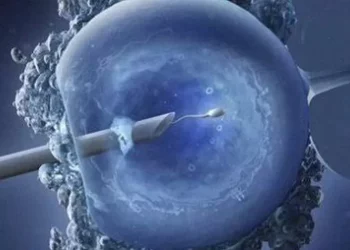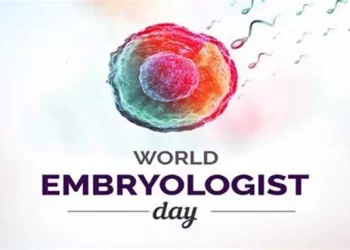Hypogonadism is a medical condition characterized by the body’s inability to produce adequate amounts of sex hormones, particularly testosterone, due to dysfunctions in the testes or the hypothalamic-pituitary axis. Testosterone plays a critical role in male reproductive health, not only in the development of secondary sexual characteristics but also in the regulation of spermatogenesis, the process of sperm production. This article explores the intricate connection between hypogonadism and male fertility, examining how different types of hypogonadism impact testosterone levels and subsequently, sperm production and overall fertility.
Types of Hypogonadism
Hypogonadism is classified into two main types: primary and secondary hypogonadism, both of which have distinct etiologies and effects on testosterone production.
Primary Hypogonadism
Primary hypogonadism, also known as hypergonadotropic hypogonadism, occurs when the testes fail to produce sufficient testosterone despite adequate stimulation from the pituitary hormones, luteinizing hormone (LH), and follicle-stimulating hormone (FSH). Causes of primary hypogonadism include genetic conditions such as Klinefelter syndrome, physical injury to the testes, infections like mumps orchitis, and exposure to radiation or chemotherapy.
Secondary Hypogonadism
Secondary hypogonadism, or hypogonadotropic hypogonadism, arises from issues within the hypothalamus or pituitary gland, which leads to insufficient production of the gonadotropins (LH and FSH) necessary to stimulate the testes. Common causes include pituitary tumors, hypothalamic disorders, systemic illnesses, and certain medications. Unlike primary hypogonadism, secondary hypogonadism can sometimes be reversible depending on the underlying cause.
Impact on Fertility
The relationship between testosterone and sperm production is intricate and crucial for male fertility. Testosterone is essential for the development and maturation of sperm cells within the seminiferous tubules of the testes. Low testosterone levels, characteristic of hypogonadism, can severely impact both the quantity and quality of sperm, leading to varying degrees of fertility impairment.
Sperm Quantity
Testosterone deficiency can lead to oligospermia (low sperm count) or azoospermia (absence of sperm in the ejaculate). The reduction in sperm quantity is often proportional to the severity of testosterone deficiency. In severe cases, the absence of testosterone can halt spermatogenesis entirely, resulting in azoospermia.
Sperm Quality and Motility
Beyond sperm count, low testosterone levels can adversely affect sperm morphology (shape) and motility (movement), which are critical for successful fertilization. Sperm motility is crucial for the journey through the female reproductive tract to reach and fertilize the egg. Abnormal sperm morphology can impair the sperm‘s ability to penetrate the egg, further reducing fertility potential.
See also: Men’s Fertility Blood Test
Degrees of Fertility Impairment
The extent of fertility impairment in men with hypogonadism varies depending on the severity of the hormonal deficiency and the underlying cause. Mild cases might present with subfertility, where natural conception is still possible but may require longer timeframes or optimal conditions. Severe cases, particularly those involving complete spermatogenesis failure, often necessitate medical intervention to achieve conception.
Fertility Treatment Options
While hypogonadism can pose significant challenges to male fertility, several treatment options are available that aim to manage the condition and improve reproductive outcomes. Treatment strategies depend on the type and severity of hypogonadism and the individual’s reproductive goals.
Managing Hypogonadism to Improve Fertility
The primary goal in treating hypogonadism-related infertility is to restore adequate testosterone levels while simultaneously promoting spermatogenesis. This dual approach can be challenging, as some treatments for hypogonadism can paradoxically inhibit sperm production.
Testosterone Replacement Therapy (TRT)
TRT is commonly used to normalize testosterone levels in men with hypogonadism. However, it is not typically recommended for those seeking to improve fertility. Exogenous testosterone can suppress the hypothalamic-pituitary-gonadal axis, leading to decreased production of LH and FSH, which are critical for stimulating the testes to produce sperm. Consequently, while TRT can alleviate symptoms of low testosterone, it can exacerbate infertility by further reducing endogenous sperm production.
Alternative Treatments to Stimulate Sperm Production
For men with hypogonadism who wish to conceive, alternative treatments focus on stimulating the body’s natural production of testosterone and sperm.
Gonadotropin Therapy
Gonadotropin therapy involves the administration of human chorionic gonadotropin (hCG) and sometimes FSH to directly stimulate the testes. hCG acts similarly to LH, promoting testosterone production, while FSH stimulates the seminiferous tubules to enhance spermatogenesis. This therapy is often effective in men with secondary hypogonadism and can lead to significant improvements in sperm count and quality.
See also: SpermCheck Vasectomy Test
Clomiphene Citrate and Aromatase Inhibitors
Clomiphene citrate and aromatase inhibitors are oral medications that can be used to increase endogenous testosterone production by blocking estrogen feedback on the hypothalamus and pituitary, thereby boosting the production of LH and FSH. These treatments are particularly useful in men with secondary hypogonadism and can sometimes be used in conjunction with gonadotropin therapy.
Assisted Reproductive Technologies (ART)
When medical treatments fail to achieve the desired improvement in fertility, assisted reproductive technologies (ART) such as intrauterine insemination (IUI) or in vitro fertilization (IVF) may be considered. These techniques can help overcome challenges related to low sperm count or poor sperm quality by directly facilitating the fertilization process. In severe cases, intracytoplasmic sperm injection (ICSI) can be used, where a single sperm is injected directly into an egg, enhancing the chances of successful fertilization.
Conclusion
Hypogonadism significantly impacts male fertility by impairing testosterone production, which is essential for spermatogenesis. The degree of fertility impairment varies with the severity and type of hypogonadism. While testosterone replacement therapy is effective in managing symptoms of low testosterone, it is not suitable for those seeking to improve fertility due to its suppressive effects on sperm production. Alternative treatments such as gonadotropin therapy, clomiphene citrate, and aromatase inhibitors can help stimulate endogenous testosterone and sperm production. When medical treatments are insufficient, assisted reproductive technologies offer additional options for achieving conception. Consulting with a healthcare provider is crucial for proper diagnosis and personalized treatment plans to address both hypogonadism and fertility concerns.
Disclaimer
This article provides general information and is not a substitute for professional medical advice. Always consult with a healthcare provider for diagnosis and treatment tailored to individual health needs.
Related Topics:
Male Tests for Pregnancy: A Comprehensive Guide



























